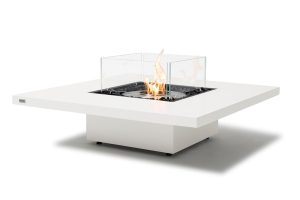Despite being notoriously inefficient, fireplaces continue to be prized for their ambiance and elegance. The allure of a crackling fire remains undiminished through the ages, symbolizing warmth and togetherness. However, the evolution of fireplaces has enabled them to serve not just as focal points of beauty but also as practical components of home heating strategies. Modern, well-maintained fireplaces can effectively complement central heating systems, allowing for reduced thermostat settings in unused rooms and thus, savings on heating bills.
While wood-burning fireplaces have long been the traditional choice, gas fireplaces present numerous benefits that are hard to overlook. Here are seven reasons why a gas fireplace might be a better fit for your home:
Gas fireplaces trump traditional wood fireplaces in terms of installation flexibility and operational costs. They eliminate the need for a substantial chimney, allowing for direct venting through an exterior wall. This flexibility in installation location, whether within a wall or as a freestanding unit in a room, makes gas fireplaces a more convenient option. They also typically require less maintenance and offer better resale value due to these conveniences.
Gas fireplaces remove the logistical challenges associated with wood fireplaces. They do not necessitate the constant purchase and storage of wood and tinder. Instead, gas is supplied either via underground pipes or stored in tanks, streamlining fuel management significantly.
The cleanliness of gas fireplaces far surpasses that of wood fireplaces. They emit minimal soot, reducing household cleaning and maintenance. In contrast, wood fireplaces can leave a mess of soot, ash, and wood debris, demanding regular chimney cleaning and ash disposal.
Gas fireplaces redefine convenience with features such as on-off switches and remote controls for flame intensity adjustments. This stands in stark contrast to the labor-intensive process of starting and maintaining a wood fire, which includes managing drafts and tending to the fire until it’s fully lit.
Safety is a paramount concern with any fireplace. Gas fireplaces come equipped with shutoff systems to prevent gas leaks and control flame size, significantly reducing the risk of fire accidents. Conversely, wood fireplaces present a higher risk and may impact insurance costs.
The energy efficiency of gas fireplaces far exceeds that of their wood-burning counterparts. With advanced materials and technology, they can convert up to 98% of their fuel into heat, whereas wood fireplaces lose a significant amount of heat through the chimney.
Modern gas fireplaces masterfully mimic the aesthetic of traditional fires. While they may lack the natural embers and sound of burning wood, available enhancements can replicate these effects. Furthermore, the design flexibility of gas fireplaces allows homeowners to tailor the look to their tastes, from realistic logs to contemporary rocks and glass, ensuring that the fireplace complements the home’s style.
In conclusion, while the charm of a traditional wood fireplace is undeniable, the benefits of gas fireplaces—from cost savings and convenience to safety and design flexibility—make them an attractive alternative for modern living. Explore the possibilities and learn how to stay warm and cozy this winter with a gas fireplace that aligns with your lifestyle and decor.
